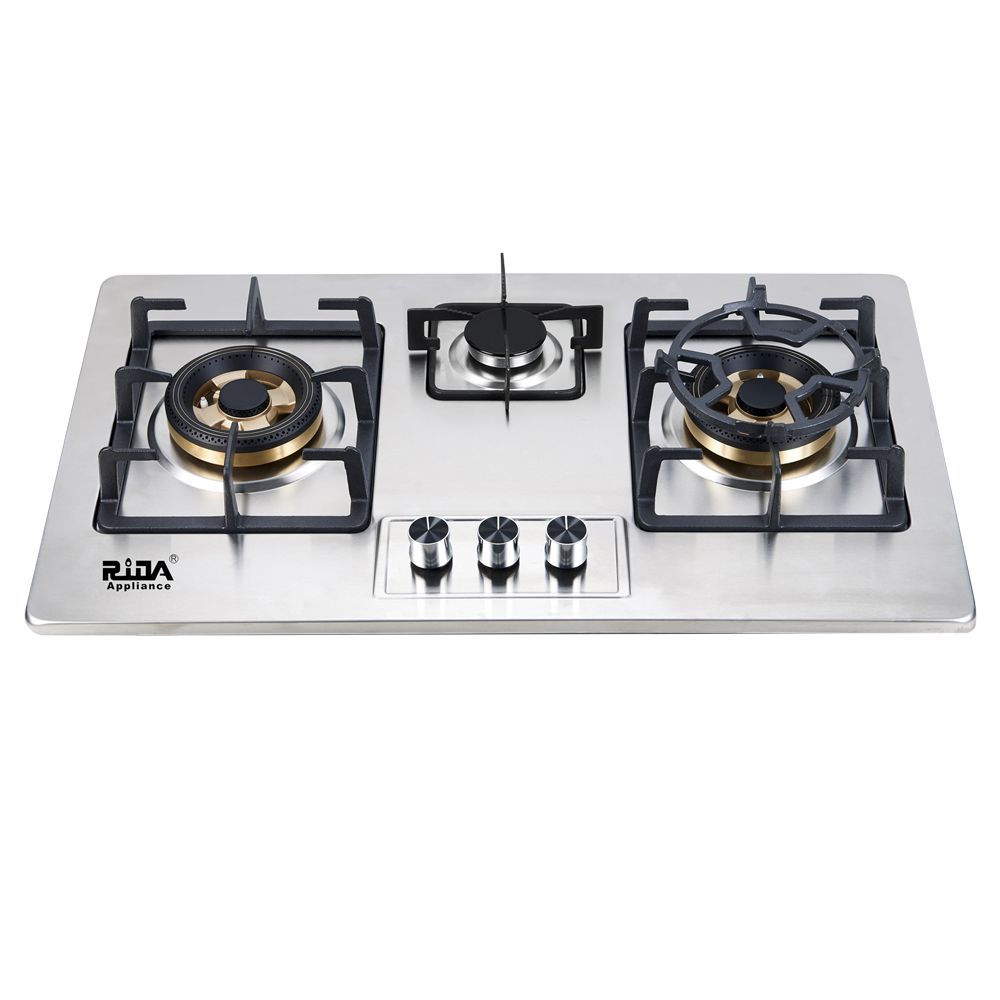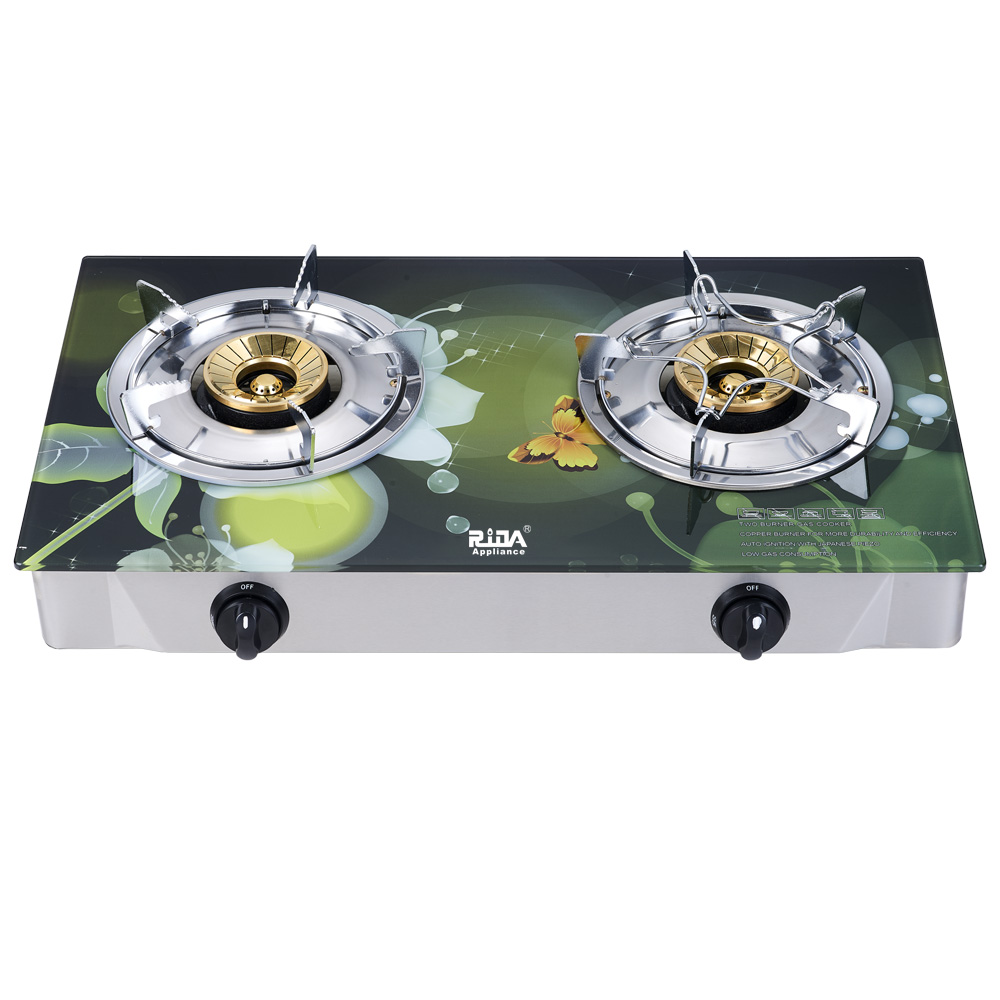| NO | PARTS | DESCRIPTION |
| 1 | Panel: | Tempered Galss with metal housing, customised logo is available on the glass. |
| 2 | Panel Size: | 750*430MM |
| 3 | Bottom Body: | Galvanized |
| 4 | Left Burner: | 100MM cast iron burner+ Brass burner cap. 4.5Kw. |
| 5 | Right Burner: | 100MM cast iron burner+ Brass burner cap. 4.5Kw. |
| 6 | Pan Support: | Enamal Grill with fire board. |
| 7 | Water Tray: | SS |
| 8 | Ignition: | Battery 1 x 1.5V DC |
| 9 | Gas Pipe: | Aluminum Gas pipe, Rotary connector. |
| 10 | Knob: | Metal |
| 11 | Packing: | Brown box, with left+right+upper foam protection. |
| 12 | Gas Type: | LPG or NG. |
| 13 | Product Size: | 750*430MM |
| 14 | Carton Size: | 790*475*205MM |
| 15 | Cutout Size: | 640*350MM |
| 16 | Loading QTY: | 400PCS/20GP, 900PCS/40HQ |


Metal knob
Tempered Galss with metal housing
100mm Brass burner 4.5kW
 What's the use of gas stove cover? The fire cover, also known as the "flame splitter", is an important component of the stove head. The fire cover can be divided into an internal fire cover and an external fire cover, respectively controlling the central fire and the peripheral fire of the stove. In addition, the fire covers are distributed with fire holes of various shapes. The materials of gas stove covers on the market are generally brass, and a few are cast iron and stainless steel. Here is a detailed introduction to the knowledge of the fire hole and material of the lower fire cover. Brass is very suitable as the material of fire cover, because it has fast heat dissipation, high melting point and is not easy to deform. A few of them are cast iron, which is also resistant to high temperature and corrosion, while stainless steel is easy to change color and deform after heating, which is of poor practicability. It is recommended that you choose brass as your first choice. In addition, the fire holes of the fire cover mainly include round holes, trapezoidal holes, rectangular holes and strip holes. Now most gas stove covers use multiple fire hole combustion combinations, the central fire uses round holes, and the peripheral fire uses square holes, circular holes and strip holes to achieve higher thermal efficiency.
What's the use of gas stove cover? The fire cover, also known as the "flame splitter", is an important component of the stove head. The fire cover can be divided into an internal fire cover and an external fire cover, respectively controlling the central fire and the peripheral fire of the stove. In addition, the fire covers are distributed with fire holes of various shapes. The materials of gas stove covers on the market are generally brass, and a few are cast iron and stainless steel. Here is a detailed introduction to the knowledge of the fire hole and material of the lower fire cover. Brass is very suitable as the material of fire cover, because it has fast heat dissipation, high melting point and is not easy to deform. A few of them are cast iron, which is also resistant to high temperature and corrosion, while stainless steel is easy to change color and deform after heating, which is of poor practicability. It is recommended that you choose brass as your first choice. In addition, the fire holes of the fire cover mainly include round holes, trapezoidal holes, rectangular holes and strip holes. Now most gas stove covers use multiple fire hole combustion combinations, the central fire uses round holes, and the peripheral fire uses square holes, circular holes and strip holes to achieve higher thermal efficiency.










